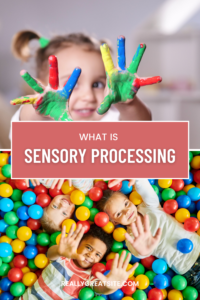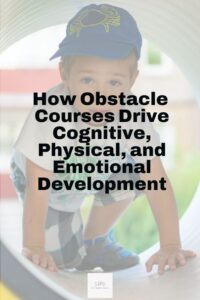
Autism Spectrum Disorder (ASD) is becoming more popular and with that so are more myths about autism. Autism is a complex and multifaceted developmental condition that affects individuals in various ways.
Despite increasing awareness and understanding, many myths and misconceptions about autism persist. These myths can lead to stigma, misunderstanding, and inadequate support for those with autism and their families.

Hi! My name is Marra and I’m a mama and a pediatric occupational therapist who has years of experience working with children with autism and helping their parents navigate the ups and downs of child development.
I loved being a support person for parents learning about autism, sensory processing, and their child’s individual needs.
I would often support families as they come to terms with a new autism diagnosis or just navigating the wild ride of child development with or without autism.
I spent a lot of time educating the parents I worked with about autism as well as debunking some of the common myths about autism or other non helpful or non-evidence-based material that is available.
This post is all about the top 10 most common myths about autism and why they are not true.

10 Common Myths About Autism: Debunked
Myths About Autism #1: Autism is caused by bad parenting
Autism is a neurodevelopmental disorder characterized by differences in brain development and functioning. Parenting styles or family dynamics do not cause it.
This myth originated from the outdated “refrigerator mother” theory proposed by psychiatrist Leo Kanner in the 1940s, which suggested that cold and unresponsive parenting led to autism. This theory has been thoroughly debunked by decades of research.
Modern studies indicate that autism has strong genetic roots. Twin studies have shown that if one identical twin is diagnosed with autism, the likelihood of the other twin also being diagnosed is significantly higher compared to non-identical twins.
Additionally, research points to a combination of genetic predisposition and environmental factors, such as prenatal exposure to certain substances or complications during birth, as potential contributors. None of these factors relate to the quality of parenting a child receives.
Believing that autism is caused by bad parenting places undue blame and guilt on parents, who are already coping with the challenges of raising a child with special needs. I
t diverts attention from seeking appropriate interventions and support services that can help the child thrive and couldn’t be further from the truth.
MYTHS ABOUT AUTISM #2: People with autism lack empathy
The belief that individuals with autism lack empathy is one of the most pervasive and damaging myths. Empathy involves cognitive empathy (understanding another person’s perspective) and affective empathy (sharing another person’s emotions).
People with autism often struggle with cognitive empathy, which can make it difficult for them to interpret social cues and understand others’ perspectives.
However, many have intact or even heightened affective empathy, meaning they can deeply feel and respond to others’ emotions.
Research has shown that while individuals with autism may struggle with theory of mind (the ability to understand that others have thoughts and feelings different from their own), this does not equate to a lack of empathy.
Brain imaging studies have demonstrated that people with autism often experience strong emotional responses. The challenge lies more in how they express and interpret these emotions rather than a deficiency in the emotions themselves.
This myth can lead to social isolation and misunderstanding. If people assume that individuals with autism do not care about others, they may be less likely to engage with them socially or offer support.
It’s important to recognize that people with autism can and do care deeply about others but may need help in expressing and navigating these feelings.
MYTHS ABOUT AUTISM #3 Autism can be outgrown
Autism is a lifelong condition. While individuals with autism can make significant progress with early intervention, support, and therapy, they do not “outgrow” autism.
The core characteristics of autism, such as differences in communication, social interaction, and behavior, remain throughout a person’s life.
Longitudinal studies tracking individuals with autism over many years show that while symptoms can change and improve with age, the underlying neurodevelopmental differences persist.
For example, some children with autism who receive intensive early intervention may develop better communication skills and learn to manage social situations more effectively. However, they still experience the world in a way that is consistent with an autism diagnosis.
Believing that autism can be outgrown can lead to unrealistic expectations and frustration for both individuals with autism and their families.
It is crucial to focus on ongoing support and strategies that help individuals with autism navigate their daily lives and reach their full potential rather than striving for a “cure” that doesn’t exist.

MYTHS ABOUT AUTISM #4: Vaccines cause autism
The claim that vaccines cause autism is perhaps the most well-known and thoroughly debunked myth.
Major health organizations, including the Centers for Disease Control and Prevention (CDC), the World Health Organization (WHO), and the American Academy of Pediatrics, have affirmed the safety of vaccines.
This myth has had dangerous consequences, leading to decreased vaccination rates and subsequent outbreaks of preventable diseases like measles.
It also diverts attention and resources away from valuable research into the true causes and best interventions for autism. Parents need accurate information to make informed decisions about their children’s health.
MYTHS ABOUT AUTISM #5: All individuals with autism have intellectual disabilities
Autism is a spectrum disorder, meaning it encompasses a wide range of abilities and challenges.
While some individuals with autism may have intellectual disabilities, many have average or above-average intelligence. Cognitive abilities can vary widely among individuals with autism.
Studies show that approximately 31% of individuals with autism have an intellectual disability, defined as an IQ below 70. However, many individuals with autism have average or above-average IQs.
It’s important to recognize that intelligence is just one aspect of a person’s capabilities and does not define their potential or worth.
This misconception can lead to underestimation and lack of opportunities for individuals with autism.
Assuming that all individuals with autism have intellectual disabilities can result in inappropriate educational placements, limited job opportunities, and restricted social interactions.
Recognizing and nurturing the strengths and abilities of individuals with autism is essential for their development and inclusion in society.

MYTHS ABOUT AUTISM #6: People with autism prefer to be alone
While social interactions can be challenging for many individuals with autism, this does not mean they prefer to be alone. Social difficulties can stem from problems with communication, understanding social cues, and sensory overload.
Many individuals with autism desire social connections and friendships but may need support to engage in social activities comfortably.
Research has shown that individuals with autism can and do form meaningful relationships. They may have a smaller social circle or prefer more structured social settings, but the desire for social interaction is present.
Social skills training and supportive environments can help individuals with autism develop and maintain relationships.
This myth can lead to social isolation and exclusion. If people assume that individuals with autism do not want to interact, they may be less likely to include them in social activities or provide opportunities for social engagement.
It’s important to create inclusive environments and offer support to help individuals with autism build and sustain social connections.
MYTHS ABOUT AUTISM #7: Autism only affects boys
Autism is more commonly diagnosed in boys, but it affects individuals of all genders. The current ratio is approximately 4:1 (boys to girls), but this discrepancy may be due in part to differences in how autism presents in boys and girls.
Girls and women with autism may be underdiagnosed because they often present differently and may mask their symptoms.
Research suggests that girls with autism may exhibit less overtly disruptive behaviors and may be better at camouflaging their difficulties by mimicking social behaviors.
This can lead to delayed or missed diagnoses. Additionally, diagnostic criteria have historically been based on studies of boys, which may not capture the full spectrum of how autism manifests in girls.
Underdiagnosis and misdiagnosis of girls and women with autism can result in a lack of appropriate support and services.
Recognizing that autism affects all genders and improving diagnostic criteria to better identify autism in girls is crucial for ensuring that everyone receives the support they need.
MYTHS ABOUT AUTISM #8: Individuals with autism are all the same
Autism is a spectrum disorder, meaning it includes a wide range of abilities, challenges, and characteristics. No two individuals with autism are exactly alike.
Some may have significant communication challenges and require substantial support, while others may be highly verbal and require less assistance.
Autism is characterized by differences in communication, social interaction, and behavior, but these can vary widely from person to person.
Some individuals may have co-occurring conditions such as ADHD, anxiety, or sensory processing disorders, which can further influence their experiences and needs.
Recognizing and respecting the individuality of each person with autism is essential for providing appropriate support and interventions.
This myth can lead to one-size-fits-all approaches that do not meet the diverse needs of individuals with autism.
Tailoring support and interventions to the unique strengths and challenges of each person is crucial for their development and well-being.
Understanding and embracing the diversity within the autism spectrum fosters a more inclusive and supportive society.
MYTHS ABOUT AUTISM #9: Autism is a result of poor diet
There is no scientific evidence to support the idea that poor diet causes autism.
While certain dietary interventions may help manage specific symptoms or co-occurring conditions (such as gastrointestinal issues), they do not cause or cure autism. Autism’s roots lie in neurodevelopmental differences, not nutritional deficiencies.
Autism is a complex condition with genetic and environmental factors contributing to its development. Studies have explored various potential causes, but poor diet is not among them.
Some individuals with autism may have food sensitivities or preferences that require dietary adjustments, but these are not causative factors.
Believing that diet causes autism can lead to unnecessary dietary restrictions and misplaced blame.
It also detracts from focusing on effective interventions and support strategies. Ensuring a balanced and nutritious diet is important for overall health, but it is not a solution for autism.
MYTHS ABOUT AUTISM #10: Therapies can cure autism
While various therapies (such as occupational therapy, speech therapy, and behavioral therapy) can significantly improve the quality of life for individuals with autism by helping them develop skills and strategies to navigate their world, these therapies do not “cure” autism.
The goal of therapy is to support individuals in achieving their fullest potential and leading fulfilling lives, not to eliminate autism.
Therapies for autism focus on enhancing communication, social skills, daily living skills, and managing behaviors.
They are tailored to the individual’s needs and strengths. While progress can be substantial, autism is a lifelong condition with enduring neurodevelopmental differences.
The notion of a “cure” can set unrealistic expectations and may lead to disappointment and frustration.
Emphasizing therapies as tools for empowerment and support rather than cure promotes a more positive and realistic approach to autism. It is important to celebrate progress and achievements without framing autism as something that needs to be eradicated.

Understanding autism requires dispelling myths and misconceptions that can lead to misunderstanding and stigma. By debunking these myths, we can foster a more inclusive and supportive environment for individuals with autism and their families.
As an occupational therapist, I am committed to promoting accurate information and advocating for the diverse needs and strengths of the autism community.
Let’s continue to educate ourselves and others, creating a world where everyone, regardless of neurological differences, is understood and valued.
For those interested in learning more about autism, here are some valuable resources:

